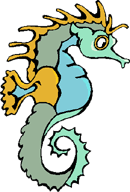|
||||||||||||||||
 |
|
||
Topics: |
|
The Sibilants [ s ], [ z ], [ ʃ ], [ ʒ ]Among the English fricatives, [ s ] and [ ʃ ] and their 'voiced' counterparts, [ z ] and [ ʒ ] are characterized by very audible high-pitched friction. These sounds are noticeably more 'fricative' than other English fricative sounds such as [ f ] and [ v ] or [ θ ] and [ ð ], and for this reason are referred to as sibilants. English sibilants are of two basic types. On the one hand, there are so-called alveolar sibilants, [ s ] and [ z ], which occur in words such as sea, boss, zoo, and rose. On the other hand, there are the palato-alveolar sibilants [ ʃ ] and [ z ] (as in she and measure).
Palato-alveolar sibilants[ ʃ ]Remember that the [ s/ʃ ] contrast is one of the major phonological contrasts of English. Acquiring authentic-sounding palato-alveolar sibilants is far more important than remembering to use liaison at word boundaries, or using native-sounding vowels or intonation patterns. Start by practicing your palato-alveolars in isolation. If you have
difficulty in producing an authentic-sounding
[ ʃ ] you should check these points: [ ʒ ]This sound is the voiced counterpart of [ ʃ ]. If you can say [ ʃ ], you can achieve [ ʒ ] by starting off with [ ʃ ] and “switching on” your voice during production. Practice saying [ ʃʃʃʃʒʒʒʒʃʃʃʃʒʒʒʒʃʃʃʃʒʒʒʒ ]. Distribution is limited to word-medial position, except in the case of small number (mainly French) loan words, such as prestige, beige, rouge, barrage, collage, where the sound occurs word-finally. It occurs word-initially in the Italian loanword gigolo. Spelling Phrases with [ ʒ ]; all occurrences of [ ʒ ] are in bold.
Physical descriptionThis is complicated by the fact that, in spite of the traditional labelling of these sounds according of place of articulation, it is probably the shape of the tongue, which is critical in producing the characteristic sibilant sound (or either type). Sibilants are produced by channelling the air stream along a groove that runs down the centre of the blade of the tongue (see The diagram); and for this reason, these sounds are sometimes termed ‘grooved fricatives’. Further, the ‘correctness’ of a sibilant of either type is primarily a matter of how it sounds; and different speakers may produce the right sounds by slightly different articulatory means. Some speakers, for example, use the tongue tip to produce the alveolar sibilants; while others use the blade . To produce a palato-alveolar, the blade is always used; but while some speakers may tuck their tongue tips down behind their lower front teeth, other hold the tongue tip up near the alveolar ridge .
Alveolars The tongue blade is hollowed for [ s ], while it is domed for the contrasting [ ʃ ] sound. With [ s ], there is usually no free space between the tongue tip and the front teeth; although this may not be true for those speakers who use their tongue tips rather than blades to make this sound. The articulation involves considerable muscular tension in order to maintain the narrow but deep groove in the tongue blade. This is why drunkards may sometimes be heard to substitute the [ ʃ ] for [ s ] in their attempts at speech, since alcohol serves to relax the muscles generally. The alveolar sibilant sound is much higher-pitched (that is, it includes more high-frequency sound) than the palato-alveolar sound.
Palato-alveolars The channel in the tongue blade is much wider, and also shallower, than is the case with [ s ]. Air pressure is lower, and the escape of air is more diffuse, with the friction occurring over a wider area of the tongue and the alveolar ridge. The friction, while still very audible, is considerably lower in pitch than in the case of the [ s ] sound. The front of the tongue is also raised towards the hard palate; thus the articulation may be described as ‘palatal’. It is for this reason that native English speakers usually substitute [ ʃ ] for [ s ] when /s/ is immediately followed by the palatal continuent [ j ], as an effect of assimilation; thus expressions such as I’ll miss you or this year are typically pronounced with palato-alveolar rather than alveolar sibilant sounds. The palato-alveolar sibilants of some speakers may be accompanied by slight lip-rounding in all positions, while for others this only occurs when the sound is followed by a rounded vowel.
The learning problemIn the native Finnish system there is only one sibilant, Finnish /s/, to correspond to the English /s/, /z/, /ʃ/, and /ʒ/. This means that the Finnish learner of English has to go from his/her own less- differentiated native system to a more highly-differentiated one, and is faced with problems of perception and production. Since there is only one sibilant in Finnish, speakers have certain amount of freedom in the precise quality they give it; and so Finnish /s/ may sometimes have a more palato-alveolar quality than English /s/ does. Nonetheless, the Finnish sound is broadly acceptable as a token for English /s/; because the empirical fact are that except in rare individual cases, Finns have very little trouble with the English alveolar sound. Finnish learners’ problems begin when they try to produce the English palato-alveolars [ ʃ ] and [ ʒ ]. Finns often have great difficulty
in maintaining a consistent ‘palato-alveolar’ quality, and
preventing an ‘alveolar’ sound from creeping in. But it is
much rarer for a Finnish learner’s alveolars to be
spoiled by being too palato-alveolar; and when this
does happen, it is usually the result of interference from
neighbouring palato-alveolar sound. For example, the learner
may pronounce a word such as position with
the alveolar and palato-alveolar sounds reversed; or produce
a sound intermediate in quality between the alveolar and palato-alveolar
values, to represent both sibilant sounds. |
|
 |
Theory adapted from: English Pronunciation (opetusmonisteita) 3rd edition by Michael Peacock. |











